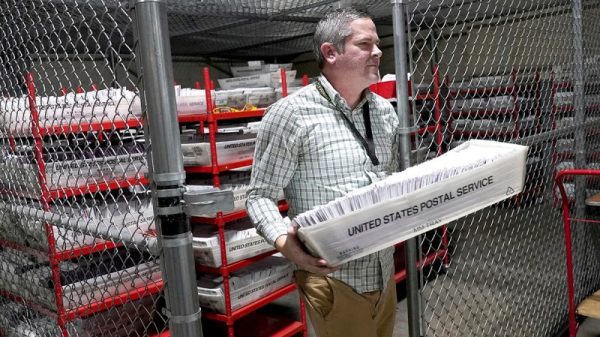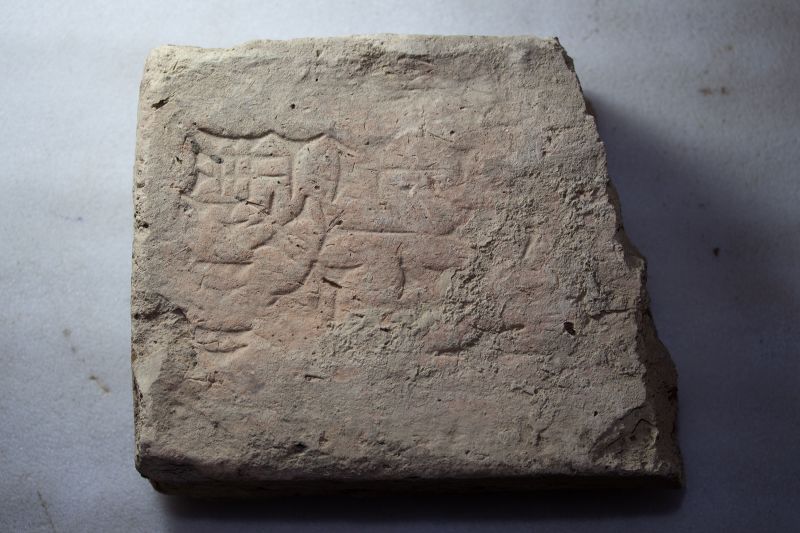Thousands of years ago, Earth’s magnetic field underwent a significant power surge over a part of the planet that included the ancient kingdom of Mesopotamia. People at the time probably never even noticed the fluctuation, but signs of the anomaly, including previously unknown details, were preserved in the mud bricks that they baked, new research has found.
When scientists recently examined bricks dating from the third to the first millennia BC in Mesopotamia — which encompassed present-day Iraq and parts of what is now Syria, Iran and Turkey — they detected magnetic signatures in those from the first millennium, indicating that the bricks were fired at a time when Earth’s magnetic field was unusually strong. Stamps on the bricks naming Mesopotamian kings enabled researchers to confirm the time range for the magnetic spike.
Their findings corresponded with a known magnetic surge called the “Levantine Iron Age geomagnetic Anomaly,” which took place between 1050 and 550 BC. It had previously been documented in artifacts from the Azores, Bulgaria and China using archaeomagnetic analysis — examining grains in pottery and ceramic archaeological objects for clues about Earth’s magnetic activity, scientists reported December 18 in the journal Proceedings of the National Academy of Sciences.
“It is really exciting that ancient artifacts from Mesopotamia help to explain and record key events in Earth history such as fluctuations in the magnetic field,” said study coauthor Mark Altaweel, a professor of Near East archaeology and archaeological data science at the University College London’s Institute of Archaeology.
‘Human-made rocks’
When an ancient artifact contains organic matter, such as bone or wood, scientists can learn how old it is through radiocarbon dating, which compares ratios of decay preserved in carbon isotopes. But for inorganic artifacts — pottery or ceramic objects — archaeomagnetic analysis is necessary to reveal their age, said lead study author Matthew Howland, an assistant professor in the department of anthropology at Wichita State University in Kansas.
“Archaeomagnetic dating can be applied to any kind of magnetically sensitive materials that have been heated up,” Howland said. And its usefulness extends beyond archaeology.
“Geologists often use analysis of rocks to study Earth’s magnetic fields, but in more recent times when there’s not the possibility of studying very recent rocks because they haven’t had the time to form yet, we need to use archaeological artifacts,” he said. “We can think of mud bricks or pottery as human-made rocks to study Earth’s magnetic fields.”
Before this new study, there was little precise archaeomagnetic evidence from Mesopotamian artifacts dating to this time.
“The lack of data there really restricted our ability to understand the conditions of Earth’s magnetic field in that region,” Howland said. It also meant that archaeologists couldn’t accurately calculate the ages of many sites in Mesopotamia, “an incredibly important region in world archaeology.”
Magnetic attraction
Earth is surrounded by a magnetosphere — an invisible bubble of magnetism generated by the powerful churning of molten metals at Earth’s core. It prevents our atmosphere from being stripped away by solar winds blasting it from the sun. While the magnetosphere has been a constant presence for billions of years, its strength waxes and wanes over time. (Human health is not directly affected by magnetic field fluctuations, according to the US Geological Survey.)
Clay artifacts that were baked at high temperatures retain a “fingerprint” of Earth’s magnetism at the time in minerals such as iron oxide affected by magnetism. Retrieving that fingerprint involves a series of magnetic experiments that repeatedly heat and cool the object, exposing it to magnetic fields and then removing them. This process creates a series of new fingerprints, which are compared with the object’s original magnetic intensity.
Scientists can then match the object to a specific period of activity in Earth’s magnetic field.
“Overall, this is exciting work because it is helping us understand what Earth’s magnetic field is doing through time and will also help determine the age of artifacts that otherwise would be impossible,” said Cauê S. Borlina, a postdoctoral fellow in the department of Earth and planetary sciences at Johns Hopkins University. Borlina, who was not involved in the study, conducts research on ancient and modern magnetic fields, and their impact on planet formation and habitability.
The new analysis not only filled an important data gap—it also revealed new clues about that period’s magnetic anomaly.
Of the 32 stones that the researchers sampled, five bore stamps linking them to the reign of Nebuchadnezzar II, between 604 and 562 BC. Measurements of magnetism in the stones showed that the magnetic field strengthened quickly and intensely when the bricks were made. The stamps on the bricks therefore created a snapshot of a magnetic power surge that spanned just a few decades.
“The next steps are to continue this work, apply it to more mud bricks from Mesopotamia and further improve the curve that we can produce of the intensity of Earth’s magnetic field over time,” Howland said.
“But perhaps even more exciting is that archaeologists working at sites in Iraq and Syria can look at our data and apply the same techniques to undated artifacts,” he added. “This can help resolve a lot of the chronological debates that occur in the region, about the chronology of kings.”
Mindy Weisberger is a science writer and media producer whose work has appeared in Live Science, Scientific American and How It Works magazine.







































